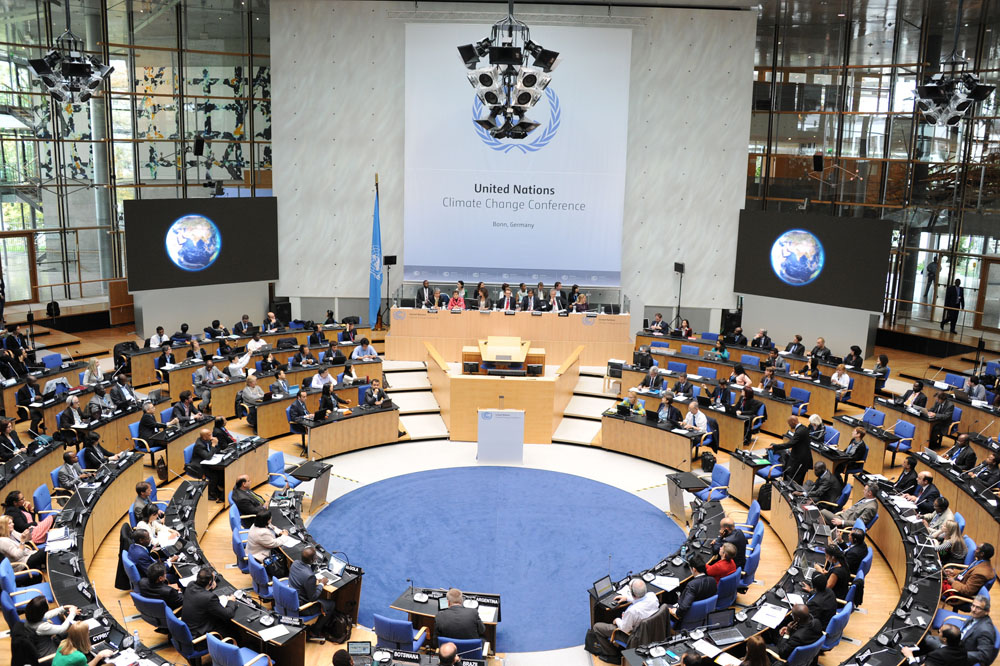-
Managing Expectations for the Paris Climate Conference and Beyond
October 30, 2015 By Rachel E. Golden KronerThe focus of the global community on the outcomes of the Paris Conference of Parties (COP) to the UN Framework Convention on Climate Change (UNFCCC) in December is unprecedented. The world awaits, anticipating the details of an international and legally-binding agreement to address climate change. [Video Below]
The prospect of a successful outcome is certainly a source of optimism and excitement. “[T]he eyes of the world will be on Paris…all indications seem to point toward success,” said Christiana Figueres, the executive secretary of the UNFCC, in a video made specifically for the ongoing “Managing Our Planet” series. The road to Paris has been enabled by many other negotiations – from Kyoto to Copenhagen to Durban. These talks have set the precedent for a deal to come soon. However, despite this optimism and vision of an effective and comprehensive climate strategy, it is important to look beyond Paris.
To set the Paris deal in motion, the global community must ensure effective implementation, deliver adequate financing, and encourage transparency and accountability. Without these critical components, the negotiations will not stop temperatures from rising to dangerous levels. After the post-Paris celebrations calm down, the global community must keep up the momentum or risk another failed attempt at addressing climate change.
The Structure of the Negotiations
The Paris negotiations will culminate in the Paris Alliance – a visionary and comprehensive plan to address global climate change. The Paris Alliance includes four pillars: a legally-binding international deal; a national plan from each country; financing of at least $100 billion annually; and formal recognition of non-state actions focused on alleviating climate change. This is an all-hands-on-deck, all-of-the-above approach; it will be implemented by all countries worldwide and utilize a variety of tools. Both mitigation and adaptation will be addressed, harnessing interventions ranging from higher fuel efficiency standards to renewable energy development to forest conservation.
Furthermore, the Paris negotiations are structured in a unique way. Historically, the UNFCCC has relied upon the premise of differentiation – developed and developing countries were expected to contribute to solutions in different ways. For instance, in the Kyoto Protocol, developed countries (polluters of the past) were responsible for meeting legally binding emissions targets, while developing countries were not. Although this is rooted in the polluter-pays principle, developed countries, including the United States, were not keen on it.
At the Wilson Center on October 14, Lisa Friedman, deputy editor of ClimateWire, emphasized the role of differentiation in the climate agreements, noting that “this fight has been going on for a long time…and the U.S. rejected [Kyoto] because of that.”
The deal in Paris, however, is quite different. Each nation must submit an Intended Nationally Determined Contributions (INDC) document detailing what commitments it will make. This voluntary, bottom-up approach ensures that each nation feels a sense of ownership. The national plans will hopefully eventually “add up” to carbon emissions reductions that prevent a rise in global temperatures of more than two degrees Celsius.
Expectations vs. Reality
As of today, at least 126 nations have submitted INDCs. The submission of so many plans months before the conference is a positive sign that negotiators will avoid last-minute uncertainty. Carbon accounting and transparency, along with innovative technological solutions, are integrated into many plans. However, as of now, the INDCs do not add up to match the two degrees Celsius target to which the global community aspires.
Commitments so far do not add up to match the 2° C targetMany hard commitments are not yet in place. Exact targets for mitigation and commitments for financing, for example, are lacking. The plans to compensate those most affected by climate change are not yet agreed upon. Furthermore, the strategies to follow up on and upgrade these commitments are missing.
The details of the mitigation targets, financing, compensation for loss and damage, and other components will ultimately be determined by politics. The final outcome is unpredictable at this point, said Yamide Dagnet, a senior associate with the World Resources Institute’s Collective Climate Action Objective. She emphasized that the negotiations are likely to involve “asks and gives” between nations negotiating until “the final hour.”
Looking Beyond
When the dust settles this fall, the Paris COP is likely to produce the first binding, comprehensive international agreement to address climate change. After the celebrations die down, however, it is critical that the global community push for effective implementation of the Paris Alliance.
Nations must strive to reach their goals in a timely manner, deploying their resources and reporting on their progress to ensure transparency and accountability. Further, governments will need to begin investigating ways to avoid unintended consequences of their strategies and consider tradeoffs between goals (e.g., between renewable energy development and habitat connectivity in a biodiverse region).
Here in the United States, the 2016 presidential election is likely to play a key role in successful implementation of the deal. If the United States is not on board, Paris threatens to be another Kyoto.
If all goes well, and every nation successfully implements their INDCs, then the success of Paris will still have only just begun. Implementation will not be simple nor will benefits be immediate. Momentum may fade. “It’s very important that we don’t backtrack,” said Dagnet. “We need to keep the momentum way after Paris.” In order for the deal to truly be successful, there must be enough institutional and political will to carry this deal forward for decades into the future.
Rachel E. Golden Kroner is a PhD student at George Mason University in the Environmental Science and Policy Department. Her research focuses on how changes to conservation and development practices affect habitat and biodiversity in the Amazon rain forest.
Sources: World Resources Institute.
Photo Credit: Bonn session of the UNFCCC Subsidiary Body for Implementation and Subsidiary Body for Scientific and Technological Advice, October 2014, courtesy of the UNFCCC.
 A Publication of the Stimson Center.
A Publication of the Stimson Center.




